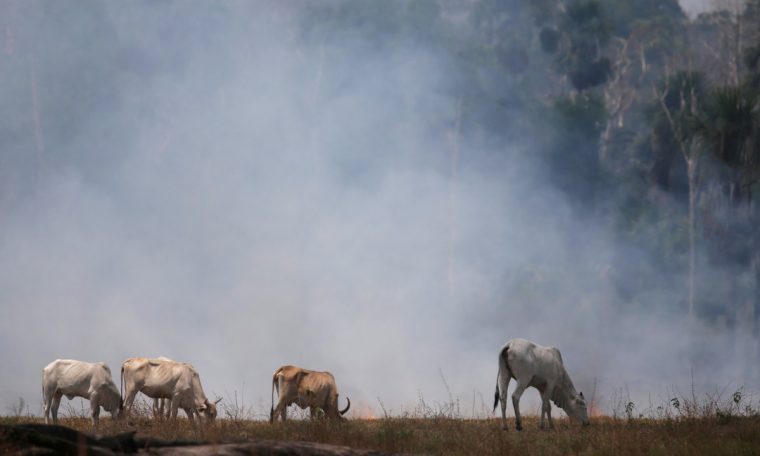
In a global effort to reduce methane emissions by 30% by 2030 from 2020 levels, 97 countries joined the global methane commitment on Tuesday (2), according to the agreement’s official website.
First announced on the eve of September COP26, the deal now covers half of the top 30 methane emitters, which account for two-thirds of the global economy. (Understand below what is methane gas)
Brazil is among the largest emitters of gas and is also committed to the reduction target. The announcement came during the United Nations (UN) climate conference at COP26 in Glasglow, England.
Read more below about the countries that signed and failed to sign the agreement..
Methane is a gas that accelerates the rise in temperature on Earth. It is produced in cattle’s digestive tract and natural processes, but more than half of the gas comes from a range of human activities, such as landfill waste and oil and gas production.
According to experts, methane is 80 times more powerful in raising the Earth’s temperature than carbon dioxide (CO2), which is responsible for 30% of global warming since pre-industrial times.
Since methane has a shorter lifetime than CO2 in the atmosphere, reducing methane emissions is one of the most effective and fastest ways to slow climate change.
countries that refused to sign
Brazil appears on the list as the new signatory to the commitment, but an official announcement has yet to be made. hey G1 He demanded the Ministry of the Environment, which ratified the country’s membership.
The following South American countries are also included in the list of signatories: Ecuador, Peru, Argentina, Chile, Colombia and Guyana.
However, according to Reuters, The three major greenhouse gas emitting powers – China, Russia and India – have not signed up for the pledge, while Australia has said it will not support the pledge..
In 2019, methane in the atmosphere reached record levels nearly two and a half times higher than in the pre-industrial era.
Brazil is the fifth largest global emitter of methane due to livestock, as 61% of agribusiness gas emissions come from the intestinal fermentation of cattle.
Data from the Climate Observatory’s Greenhouse Gas Emissions Estimation System (SEEG) shows that agricultural emissions in the country are high: they increased by 2.5% in 2020 over the previous year.
Agriculture has been the second largest emitter of greenhouse gases in Brazil since at least 1990 (the year the SEEG began calculating emissions by sector), accounting for 27% of total gross missions today. When added to deforestation – Brazil’s agriculture is directly linked to deforestation – the activities add up to 73% of all emissions in the country.
why is gas so harmful
Methane is generated primarily in the digestive tract of animals and in natural processes, but more than half of the gas is produced from a range of human activities, such as landfill waste and oil and gas production.
According to climatologists, methane is as much or more harmful than CO2: it is 80 times more powerful in raising Earth’s temperature than carbon dioxide, which has been responsible for 30% of global warming since pre-industrial times.
Despite this, methane has a shorter lifetime than CO2 in the atmosphere. Therefore, reducing methane emissions is one of the most effective and fastest ways to slow climate change.



